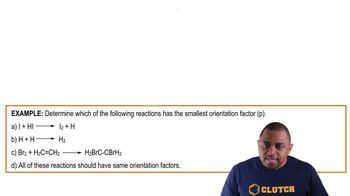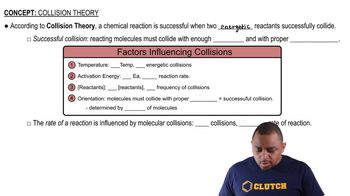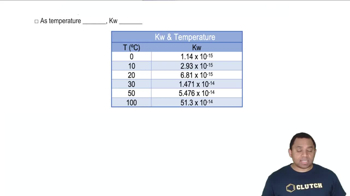(a) What factors determine whether a collision between two molecules will lead to a chemical reaction?
(a) In which of the following reactions would you expect the orientation factor to be least important in leading to the reaction: NO + O → NO2 or H + Cl → HCl? (b) Does the orientation factor depend on temperature?
 Verified step by step guidance
Verified step by step guidanceKey Concepts
Orientation Factor

Collision Theory

Temperature Dependence

(b) Does the rate constant for a reaction generally increase or decrease with an increase in reaction temperature?
Calculate the fraction of atoms in a sample of argon gas at 400 K that has an energy of 10.0 kJ or greater.
(a) The activation energy for the isomerization of methyl isonitrile (Figure 14.6) is 160 kJ>mol. Calculate the fraction of methyl isonitrile molecules that has an energy equal to or greater than the activation energy at 500 K. (b) Calculate this fraction for a temperature of 520 K. What is the ratio of the fraction at 520 K to that at 500 K?
The gas-phase reaction Cl(g) + HBr(g) → HCl(g) + Br(g) has an overall energy change of -66 kJ. The activation energy for the reaction is 7 kJ. (a) Sketch the energy profile for the reaction, and label Ea and ΔE.
